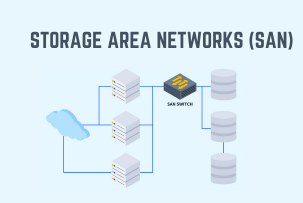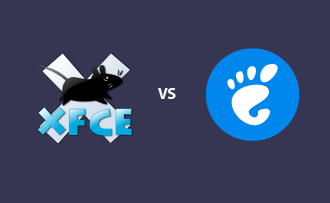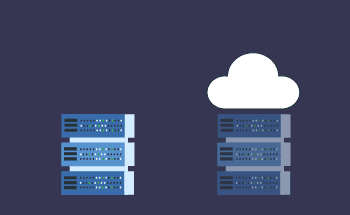Complete Periodic Table of DevOps Tools
08:52, 12.06.2024
In the past, developers worked separately from other divisions and had their own isolated view of the scope of the project. Then the DevOps area of production emerged, which combines both the developmental and operational processes that cut through different areas related to product development.
DevOps is more than just a position a professional can occupy; it’s a methodology that consists of tools, practices, and concepts that connect software development and the scope of operations within a team.
In this article, we will have an in-depth look at the DevOps periodic table.
Exploring the DevOps Periodic Table
Now that we understand what DevOps deals with, let’s look more in-depth into what the DevOps Periodic Table means. DevOps Periodic Table is a table that consists of all DevOps tools for the software delivery cycle. It’s the ultimate industry source for finding the latest technologies in the field. It was created in 2020 by DevOps professionals, who have submitted more than 400 tools to be added to the table.
One can use the DevOps periodic table to quickly find and use tools for the pipeline to begin the project, replace methods, or incorporate new ones. The table has categories of solutions sorted by different aspects like functionality, nature, and cost: for example free, open source, freemium, paid, enterprise, etc. The periodic table is an ultimate navigation platform that directly points to where you can download the mentioned software solutions for monitoring, automation, testing, and other purposes.
Generally, the DevOps periodic table can help automate processes and facilitate a balance between development, operations, and product management professionals. DevOps's main objective is to increase the frequency of software releases, automate processes to the fullest extent, monitor the environment, and improve operations within it.
Each category in the DevOps periodic table includes tools that can cover various needs.
1. AIOps and Analytics Categories
In the past, AIOps and Analytics were two different categories within a DevOps periodic table. The AI category included big data analytics, AI technologies, and machine learning. Analytics include tools that help analyze the data the application has collected, and based on the findings create insightful reports.
In the current version of the DevOps periodic table “Analytics” category became a part of the AIOps section along with AI tools themselves.
Tools in the AIOps category are used to process large data amounts and extract insights using artificial intelligence and machine learning, which can further be used by the management, operations, and development teams.
Tools in this category include:
- Datadog — SaaS-based monitoring and analytics platform;
- Big Panda — a tool for transforming IT data into actionable intelligence;
- Instana — AI Powered APM for modern containerized dynamic applications;
- Splunk — graph generator that produced reports, alerts, dashboards, and visualizations based on real-time data;
- AppDynamics —a tool for performance management (APM) and IT operations analytics;
- Kibana — data visualization dashboard software;
- Dynatrace —pipeline automation tool;
- New Relic — SaaS real-time monitoring software for web and mobile applications;
- Grafana — analytics platform for all data sources;
- Elastik ELK Stack (Elasticsearch, Logstash, and Kibana);
2. Artifact and Package Management Classifications
Package management includes handling applications, dependencies, and server artifacts. It also is a part of the development process.
Basically, everything that is “packed”, that is archives, libraries, scripts, modules, binaries, snippets, metadata, and datasets becomes an object to package management. In the DevOps periodic table, the following tools are included for artifact and package management:
- Docker Hub — a cloud-based registry service for building and shipping applications or service containers;
- npm — default package manager for the JavaScript runtime environment Node.js.;
- JFrog Artifactory — universal Artifact Repository Manager;
- Yarn — a package manager;
- NuGet — free and open-source package manager for the Microsoft development platform;
- Sonatype Nexus — a tool that helps to identify risk enforcing policy and remediate vulnerabilities across every stage of the SDLC;
3. Cloud Solutions
Even though cloud solutions are not part of the DevOps periodic table, we recommend using the cloud as a storage solution. It makes it much easier to access data from anywhere at any time, and grants access permissions to other users. You can deploy any application or software to the cloud and work with it from there.
There are a lot of cloud storage providers, the most popular, however, are AWS, Google Cloud, Azure, OpenStack, and IBM Cloud.
4. Configuration Automation Methods
Configuration automation is a term that implies monitoring, designing, managing, and obviously automating configuration processes. Configuration includes understanding the system components (applications, networks, servers) and the state of the system as a whole. The action of configuring something is about balancing everything within the system so that it can work better.
In terms of configuration, the DevOps periodic table offers us the following tools:
- Red Hat Ansible — an open-source software platform for configuring and managing computers through SSH;
- HashiCorp Terraform — a tool for safely and efficiently building combining and launching infrastructure;
- HashiCorp Consul — a service networking solution to connect and secure services across any runtime platform;
- HashiCorp Packer — free and open-source software for creating identical machine images or containers from a single source configuration;
- Chef — configuration management tool used to streamline the task of configuring and maintaining a company's server;
- AWS Cloud Formation — a tool to automate the management and deployment of application stacks;
- Puppet — an open-source configuration management utility;
5. Container Technologies
Container technologies are used to pack up and contain the code with its dependencies. It is done with the purpose of ensuring the smooth and consistent running of the application across different environments.
Prominent DevOps container solutions include:
- Docker — an open-source project that automates the deployment of applications inside software containers;
- Docker Enterprise — the only enterprise-ready container platform;
- Red Hat Openshift — a unified platform to build, modernize, and deploy applications at scale;
- Kubernetes — an open-source system for managing containerized applications across multiple hosts;
- Amazon Eks — a tool that makes it easier to run Kubernetes on AWS;
- Azure Aks — a tool that makes it easier to deploy a managed Kubernetes cluster in Azure;
- Amazon ECS — a container orchestration service that supports Docker containers and containerized applications on AWS;
- Helm — a tool for managing Kubernetes applications;
6. Continuous Integration Approaches
Continuous integration or CI for short is a software development approach that suggests that each team member must submit and integrate their work once a day every working day. Such an approach allows to update of the project gradually, thus, making it possible to detect errors quickly.
To the continuous integration approach belong the following applications:
- Jenkins — an open-source continuous integration tool for software development;
- Azure DevOps code — a service that streamlines building and deploying applications and supports team collaboration for code development;
- GitLab CI — a web application with an API that stores its state in a database, and manages projects;
- Travis CI — an open-source hosted distributed continuous integration service used to build and test projects hosted at GitHub;
- CircleCI — the world's largest shared continuous integration and continuous delivery (CI/CD) platform;
- Maven — a build automation tool used primarily for Java projects;
- Atlassian Bamboo — a continuous integration server that supports builds in any programming language using any build tool;
- GitHub Actions — a tool that automates software workflows, and allows to build, test, and deploy code right from GitHub;
- AWS CodeBuild — a fully managed build service that compiles source code runs tests and produces software packages;
- CodeFresh — a cloud-native continuous integration and delivery platform;
7. Database Management Systems
The database is an integral part of most enterprise applications. It is present in every company at some level. So managing databases is an essential DevOps skill. To master the skill, one can use tools like:
- Liquibase — an open-source database-independent library for tracking managing and applying database schema changes;
- Delphix — software for simplifying the building testing and upgrading of applications built on relational databases;
- Redgate Flyway — a tool that helps individuals, teams, and enterprises build on application delivery processes to automate database development;
- Quest Toad — a tool used to manage both relational and non-relational databases using SQL;
8. Deployment Strategies
As the application grows and expands, it has to be deployed at certain stages, including development, testing, production, etc.
The DevOps periodic table offers tools to simplify deployment:
- Azure DevOps Pipelines — software that provides services to support teams in code development and building and deploying applications;
- Digital.ai Deploy — an agentless deployment automation tool that helps enterprises deliver value 10x faster to complex middleware environments;
- UrbanCode Deploy — a tool for automating application deployments through your environments;
- OpxMx — a CI/CD solution for software supply chain security and DevOps security posture management;
- Harness — Continuous Delivery-as-a-Service platform that automates and secures the Continuous Delivery process;
- Spinnaker — an open-source multi-cloud continuous delivery platform for releasing software changes;
- Octopus Deploy — an automated deployment and release management server;
- Flux — a tool for keeping Kubernetes clusters in sync with sources of configuration;
- Tekton — an open-source framework for creating CI/CD systems, allowing developers to build, test, and deploy applications;
- AWS CodeDeploy — a service that automates code deployments to any instance including Amazon EC2 (and on-premises) instances;
9. Enterprise Agile Planning Frameworks
Agile planning tools provide a perspective on how organizations can implement agile methods better. It includes business-, stakeholder-, and customer-focused methods along with principles of collaboration.
Compared to traditional application development life cycle management (ADLM), agile planning tools are more progressive and project-focused.
You can find the following agile planning tools in the table:
- Atlassian Jira Align — an enterprise-grade solution that enables company leadership to link current developments to business outcomes without disrupting the work of Agile teams;
- Digital.ai Agility — a tool aimed to help identify potential business and product issues and improve software quality;
- Planview — focuses on helping enterprises transform strategy to delivery in today’s fast-paced, highly disruptive markets;
- Broadcom Rally — a purpose-built enterprise-class platform for scaling agile development practices;
- Atlassian Jira — a proprietary issue-tracking product that provides bug tracking issue tracking and project management functions;
10. Issue Tracking and ITSM Systems
Issue tracking systems (ITSM) follow and monitor the progress of every issue reported by the user until the latter is fixed.
Popular issue-tracking tools in DevOps are:
- ServiceNow — specializes in IT service management (ITSM) applications based on the ITIL standards;
- BMC Helix ITSM — a predictive IT service management for enterprises;
- PagerDuty — an automated incident management software;
11. Serverless and PaaS Offerings
The goal of using serverless and PaaS solutions is to manage the cloud infrastructure, including servers, networks, operating systems, and storage. They offer easier deployments, and scalability for applications, allowing users to only pay for features that they use.
Some of the PaaS solutions include:
- AWS Lambda — a tool that allows running code without provisioning or managing servers;
- Azure Functions — a tool that supports faster application development with a serverless architecture;
- Heroku — a cloud platform as a service (PaaS) supporting several programming languages;
- Google Firebase — software with analytics, database messaging, and crash reporting to streamline the development process;
- Cloud Foundry — an open-source cloud computing platform as a service (PaaS) developed by VMware;
12. Source Code Management Platforms
Managing and updating the source code is vital for the proper functioning of the application. Source code management platforms allow monitoring the modifications made by different users and their history.
The following platforms can help you do that:
- Git — a distributed revision control system for speeding up data integrity and supporting distributed workflows;
- GitHub — a web-based Git repository hosting service that offers all of the distributed revision control and source code management (SCM) functionality of Git as well as adding its own feature;
- GitLab SCM — a solution that supports software development teams to collaborate and communicate in order to quickly solve problems and deliver new features;
- Atlassian Bitbucket — a web-based hosting service for projects that use either the Mercurial or Git revision control systems;
- Compureware ISPW — an end-to-end source code management and release automation tool that enables developers to fulfill business requirements, and optimize code quality;
13. Testing Frameworks
Testing is an important part of application development since one needs to make sure that the built application functions the way it is supposed to. Testing software has multiple stages including unit testing, integration testing, system testing, and acceptance testing.
The DevOps periodic table includes the following software for testing:
- Tricentis Tosca — a testing platform that accelerates testing to keep pace with Agile and DevOps;
- Selenium — a portable software testing framework for web applications;
- JUnit — a unit testing framework for the Java programming language;
- Sauce Labs — a cloud-based automated testing platform for web and mobile applications;
- Compuware Topaz — an automated testing tool that enables testing almost immediately after updating a piece of code to ensure unintended changes weren't introduced into the codebase;
- Appium — an open-source test automation framework for use with native hybrid and mobile web apps;
- Squash TM — a test repository manager for the open-source Squash suite;
- Cucumber — a software tool for automated acceptance tests written in a behavior-driven development (BDD) style;
- JMeter — a tool used as a load testing tool for analyzing and measuring the performance of a variety of services with a focus on web applications;
- Parasoft — software with static and runtime analysis; unit functional and API testing; and service virtualization;
- Digital.ai — a tool that helps teams increase test coverage and make data-driven decisions;
14. Value Stream Management Techniques
Value stream management includes recognizing and monitoring the valuable attributes of the specific software. It includes tasks necessary to complete to deliver to clients. The value stream approach is the most efficient method for measuring the values of the application.
Tools that belong to value stream management are:
- Digital.ai — a tool that allows gaining visibility across teams, tools, and processes, organizations can measure value in meaningful terms;
- Planview Viz — enables CIOs, transformation and agility executives, and engineering and product leaders to measure value streams, and uncover bottlenecks;
- Plutora — software that can subtract the real value through improved efficiency in the delivery of roadmap features;
To Sum Up
The periodic table of DevOps is a great tool that can help DevOps professionals approach their work faster and more efficiently. It was created by developers based on the problems they faced and the solutions they found.
With the right tools, the optimization of development and production becomes easier. And you can access the source with many helpful DevOps solutions — the DevOps periodic table.


